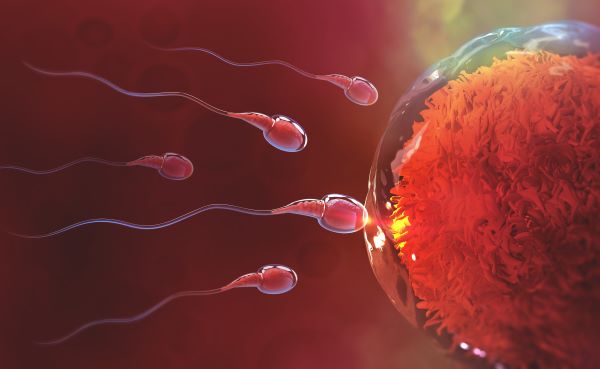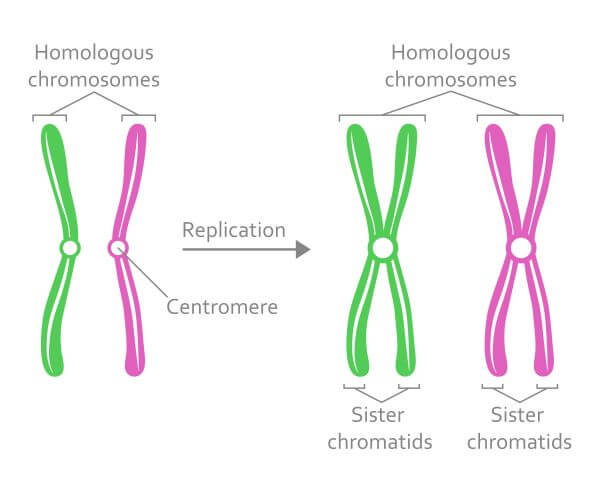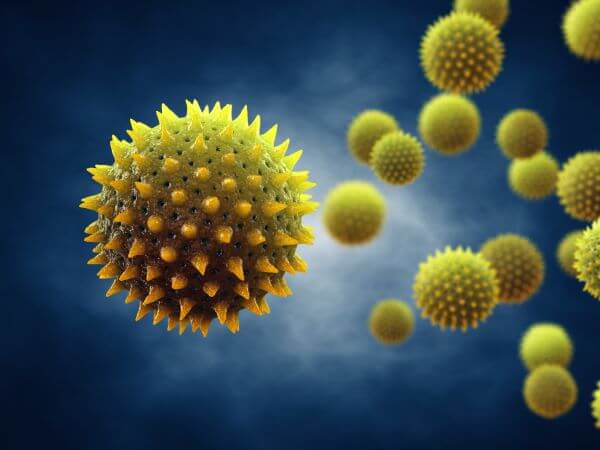A haploid cell contains a single set of chromosomes (n), whereas a diploid cell contains two sets (2n). In humans and most other multicellular organisms, the majority of cells are diploid, and only the gametes (egg and sperm cells) are haploid. However, some organisms consist entirely of haploid cells, and may reproduce sexually or asexually.

What is a Haploid Cell?
The word haploid (meaning ‘half’) describes a cell that contains a single set of chromosomes. Diploid cells contain two sets of chromosomes, which are arranged in homologous pairs. The body (AKA somatic) cells of most organisms are diploid, and only their gametes are haploid.
However, there are some organisms (such as male bees, ants, and wasps) that contain only haploid cells. This is because these insects hatch from unfertilized eggs which only contain DNA from their mother; they do not receive any chromosomes from a second parent.
How Many Chromosomes Are in a Human Haploid Cell?
Most human cells are diploid, and only the gametes (i.e., the sperm and egg cells) are haploid. Haploid cells contain half the number of chromosomes as diploid cells. A human diploid cell contains a total of 46 chromosomes (2n = 46), so a haploid cell will contain 23 chromosomes (n = 23).

How Are Haploid Cells Produced?
Haploid cells in humans are produced by meiosis. This is a type of cell division in which a single diploid parent cell divides to produce four, non-identical haploid daughter cells. Meiosis is used to produced gametes and is a necessary precursor to sexual reproduction.
Before meiosis begins, the diploid parent cell makes identical copies of all its chromosomes. Each chromosome now consists of two sister chromatids (genetically identical DNA strands) joined together by a centromere.

The cell then undergoes meiosis I, in which the newly-replicated chromosomes line up in their homologous pairs. At this point, the homologous pairs trade genetic material with one another in a process known as crossing over. This ensures that the sister chromatids are no longer genetically identical. When the cell divides, each new cell receives one chromosome (consisting of two sister chromatids) from each homologous pair. This produces two non-identical, haploid daughter cells.
During meiosis II, the two haploid daughter cells produced in meiosis I divide once more. This time, the DNA is not replicated; instead, one sister chromatid from each homologous pair is donated to each new daughter cell. The end product of meiosis II, therefore, is four non-identical haploid daughter cells.

Examples of Haploid Cells
Almost all of the cells in sexually reproducing organisms are diploid, with the only exception being the gametes. Sperm and egg cells each contain a single set of chromosomes which, during sexual reproduction, combine to form a single diploid cell (or zygote). Examples of haploid gametes include:
- Sperm and egg cells (the reproductive cells of humans)
- Spores (the reproductive cells of fungi, algae, and plants)
- Pollen (the reproductive cells of male plants)

Haploid Organisms
Haploid organisms are organisms that only contain haploid cells. Although most living things are made almost entirely of diploid cells, some multicellular organisms (like male insects of the order Hymenoptera) are haploid organisms. This is because they develop from unfertilized eggs, and therefore, only contain genetic information from a single parent (the mother). Despite this, the sole purpose of male ants, wasps, and bees is to reproduce. Male insects of this order produce haploid sperm using a type of aborted meiosis called spermatogenesis, which they use to fertilize the eggs of the queen ant.

The Haploid-dominant Life Cycle
The haploid life cycle is most commonly observed in eukaryotic, single-celled organisms. It is the simplest type of life cycle, in which organisms spend most of their lives as haploid gametes. When they fuse, the haploid gametes produce a diploid zygote which quickly undergoes meiosis to produce more haploid gametes.
Most fungi have a haploid-dominant life cycle. One example of this is the black bread mold, Rhizopus stolonifer. The mature, multicellular form of this mold is haploid, and only during sexual reproduction is a diploid zygote (called a zygospore) produced. The zygospore then undergoes meiosis to produced haploid spores which, under the right conditions, can be used for asexual reproduction.

